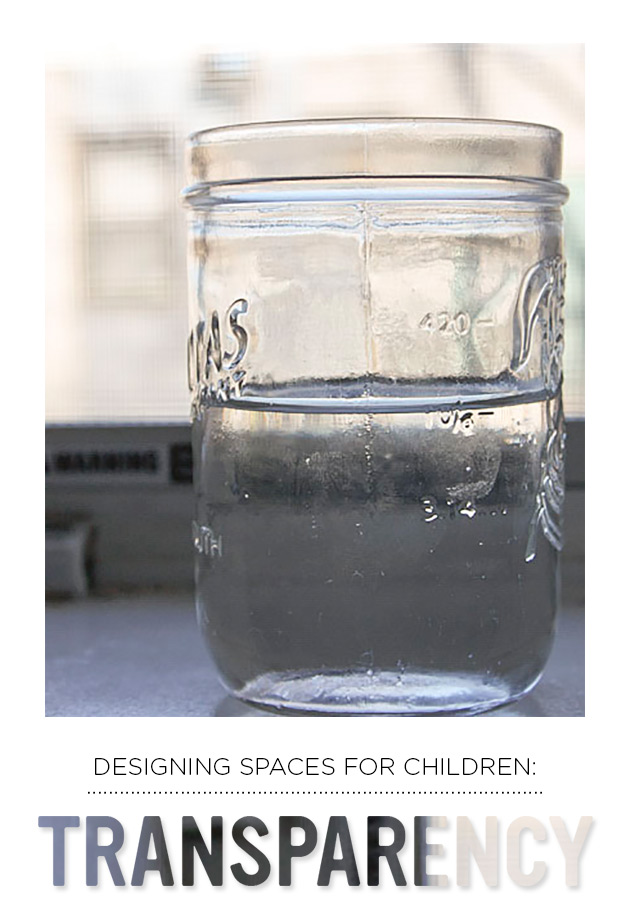Designing Spaces for Children: Transparency

The word transparency holds multiple meanings. It refers to the transmission of light through an object, such as a window or piece of fabric, and can also serve as a metaphor for visibility – making visible what is valued, what has happened, and what is underway.
So, how might you consider transparency when designing spaces for children?
One way to begin is looking at the environment from the perspective of a child. What happens when you position yourself at the eye-level of a child? What do you see? Is the furniture setup to encourage exploration in an open and inviting way? Are materials easily accessible and organized in a way that makes sense? “Seeing” supports autonomy and independent thinking, as children learn how to access the materials needed to support and extend their learning.


Glass jars have a way of making small objects look like precious things, just waiting to be discovered. Using transparent containers to hold objects highlights their attributes and can reveal rich details that may otherwise go unnoticed. Additionally, including light tables, mirrors, and other objects that catch and reflect light can invoke a sense of wonder and inspire new ways of thinking.

Transparency connects you to the outside world. Do you have windows in your space? How might they be used to invite further exploration? In this photo, a plant clipping is placed in a glass jar and set on the windowsill where children can observe the regrowth of its roots.

The spaces we create for children ultimately communicate our values. When we display children’s artwork along with photographs and other forms of documentation, we give visibility to their unique process of learning.
Where does transparency exist in your spaces for children? How do you make your values visible?
Sign-Up Now!
For more inspiration on creating spaces for children, check out our Playful Learning Spaces Workshop.
Start: November 4, 2014
End: November 21, 2014
To register, click here.
